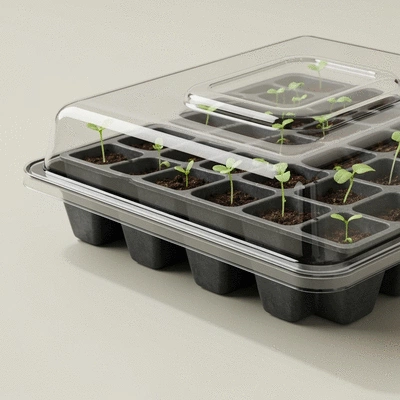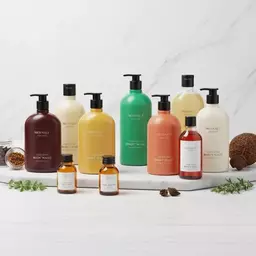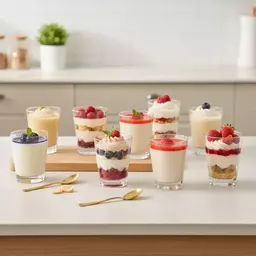Material Choice: Durability vs. Biodegradability
Plastic trays offer reusability and longevity, while biodegradable options reduce waste. Your choice impacts sustainability.
Stay ahead with the latest packaging innovations and insights from Clara Voss and Innovative Packaging Solutions.
Posted on: 2025-10-11
By: Clara Voss
What if the success of your garden could hinge on just one tool? Seed starting trays are more than just containers; they are fundamental to nurturing your plants from the very beginning. Understanding their components and materials can transform your gardening experience.
When selecting seed starting trays, three critical aspects stand out: Material, Environmental Impact, and Growth Potential. These factors, crucial for both plant health and sustainable gardening, are detailed below.
Plastic trays offer reusability and longevity, while biodegradable options reduce waste. Your choice impacts sustainability.
Biodegradable trays minimize plastic waste, aligning with eco-conscious practices. Plastic trays can be reused many times.
Proper drainage and moisture control are vital. Some materials can influence seedling health and growth rates directly.
Researching materials, assessing needs, and considering growing conditions leads to successful plant cultivation.
When it comes to starting your garden from seeds, the right tools can make all the difference. One essential tool is the seed starting tray. These trays are designed to provide an optimal environment for seeds to germinate and grow into healthy seedlings. In essence, they are small containers that hold individual or multiple seeds, allowing for controlled growth conditions.
The purpose of these trays goes beyond mere containment. They help maintain moisture, provide adequate drainage, and, importantly, support the seedlings' early growth stages. As someone who has spent years in the packaging industry, I understand that the right materials can influence not just growth, but also the sustainability of gardening practices.
Seed starting trays come in various shapes and sizes, but their primary purpose remains the same: to cultivate young plants from seeds. The trays are designed to hold potting soil and seeds, creating an ideal micro-environment for germination. Typically, they feature drainage holes to prevent water from accumulating, which is crucial for avoiding root rot.
By using seed starting trays, you can effectively manage your planting efforts, ensuring that each seed has the best possible chance of thriving. With my experience in providing high-quality packaging solutions at Innovative Packaging Solutions, I’m excited to highlight how these trays can be tailored to meet your unique gardening needs.
Choosing the right material for your seed starting trays is crucial for both the health of your plants and your gardening success. Different materials come with their own sets of advantages and disadvantages, and understanding these can guide your decision-making process. Factors such as durability, sustainability, and heat retention should be considered.
By selecting materials that align with your gardening philosophy, whether it's sustainability or practicality, you can enhance your gardening experience. As we delve deeper, I'll provide insight into the different types of materials available, helping you to make an informed choice that reflects both your gardening style and environmental impact. For further details on the significance of proper seedling trays, you can refer to insights from the University of Florida's IFAS Extension, which emphasizes their role in transplant success.
Did you know that using biodegradable seed starting trays not only benefits your plants but also contributes to environmental sustainability? These trays break down naturally, reducing waste and enriching the soil as they decompose. By choosing eco-friendly options, you're not just nurturing your garden—you're nurturing the planet!
A: Seed starting trays provide an optimal environment for germination, help control moisture and drainage, and support the early growth stages of seedlings, leading to healthier plants and easier transplanting.
A: Common materials include plastic (durable and reusable), biodegradable options (eco-friendly and reduce waste), and peat pellets (convenient for beginners).
A: Choosing biodegradable trays minimizes plastic waste and enriches soil, aligning with eco-conscious practices. Reusable plastic trays can also be sustainable if used many times, reducing the need for new purchases.
A: Key factors include material choice (durability vs. biodegradability), environmental impact, growth potential for seedlings, size, cell count, and your specific gardening needs and goals.
A: Eco-friendly practices include using biodegradable trays, practicing composting, utilizing rainwater for irrigation, and opting for native plants to support local ecosystems.
As we wrap up our discussion on seed starting trays, it’s essential to reflect on the critical factors we've explored. Choosing the right tray can significantly influence your gardening experience and the health of your plants. At Innovative Packaging Solutions, we believe that understanding material choices, sizes, and features is vital for effective seed starting.
One key takeaway is the importance of balancing your material choices with environmental concerns. Whether you opt for traditional plastic, biodegradable options, or peat pellets, each material comes with its own set of advantages and disadvantages. Making a thoughtful decision today contributes to a sustainable gardening practice tomorrow!
When selecting a seed starting tray, consider how different materials align with your values and gardening practices. Here are some factors to keep in mind:
Finding the right balance between durability and environmental responsibility is key. As we continue to champion sustainable practices at Innovative Packaging Solutions, I encourage you to explore all your options and make informed decisions for your garden.
Success in gardening often hinges on informed choices. Here’s how you can ensure you’re making the best decisions:
By taking these steps, you can set yourself up for success and enjoy a thriving garden. Remember, it's about creating a nurturing environment for your plants while aligning your practices with sustainability!
With the right knowledge and tools, sustainable gardening practices can become a rewarding part of your routine. Incorporating eco-friendly choices in your garden not only contributes to the health of our planet but also enhances your gardening experience.
Implementing sustainability in your gardening practices can be straightforward and impactful. Here are some eco-friendly strategies to consider:
By adopting these practices, you can cultivate a garden that's not just beautiful, but also beneficial for the environment!
Are you ready to get started? Choosing your ideal seed starting tray is the first step toward a successful gardening journey. Remember to assess your specific needs and preferences!
As you explore the options available, I encourage you to reach out for guidance. At Innovative Packaging Solutions, we are here to support you in finding the perfect seed starting trays to suit your garden’s goals.
Lastly, let’s discuss organic seed starting methods. These techniques prioritize natural inputs and can significantly improve your gardening outcomes. Some organic methods to consider include:
By integrating organic methods into your seed starting process, you’ll foster not only healthier plants but also a more sustainable environment for your gardening journey!
Here is a quick recap of the important points discussed in the article:



 Choosing the right planting method can significantly impact your gardening success. As a gardener, u
Choosing the right planting method can significantly impact your gardening success. As a gardener, u
 As brands strive to resonate with an increasingly personalized consumer base, the packaging of produ
As brands strive to resonate with an increasingly personalized consumer base, the packaging of produ
 In the world of foodservice, presentation and convenience are key. By embracing microwave-safe desse
In the world of foodservice, presentation and convenience are key. By embracing microwave-safe desse